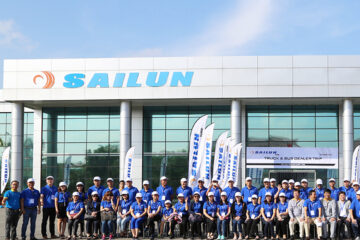Unraveling the Anatomy of a Tire: A Deep Dive into Construction
Introduction
Tires, the unsung heroes of our vehicles, are more complex than they appear. Beneath their tread patterns lies a sophisticated engineering marvel designed to provide traction, comfort, and safety. In this comprehensive guide, we’ll delve into the intricate details of tire construction, exploring the various components that work together to keep us moving.
The Foundation: The Carcass
The carcass, the heart of a tire, is the structural framework that provides strength and durability. It’s typically made of layers of fabric or steel cord, often referred to as plies. These plies are arranged in different patterns, such as bias or radial, to optimize the tire’s performance.
- Bias Ply: In bias ply tires, the plies are laid at an angle, creating a criss-cross pattern. This design offers good stability and load-carrying capacity, making it suitable for heavy-duty applications.
- Radial Ply: Radial ply tires have plies arranged perpendicular to the rim, providing better ride comfort, fuel efficiency, and handling. This construction is more common in modern passenger cars.
Reinforcement: The Belts
To enhance the tire’s strength and resistance to punctures, belts are added beneath the tread. These belts are typically made of steel cord or a combination of steel and nylon. The number and arrangement of belts determine the tire’s load-carrying capacity and puncture resistance.
The Tread: The Rubber Layer
The tread is the part of the tire that comes into contact with the road. It’s made of a rubber compound that offers traction, wear resistance, and noise reduction. The tread pattern plays a crucial role in determining the tire’s performance in various conditions.
- Grooves: These channels help disperse water, preventing hydroplaning.
- Sipes: Tiny slits in the tread blocks provide additional grip on wet or snowy surfaces.
- Shoulder Blocks: These rigid areas enhance cornering stability.
The Sidewall: The Protective Layer
The sidewall is the area between the tread and the rim. It’s made of a thicker rubber compound to protect the tire from damage and provide information about the tire’s specifications. The sidewall includes markings such as the tire size, load index, speed rating, and manufacturing date.
Tire Technology Advancements
Tire technology has evolved significantly over the years, leading to the development of innovative features that improve performance and safety. Some notable advancements include:
- Run-flat tires: These tires can maintain pressure for a limited distance even after a puncture, allowing drivers to safely reach a repair shop.
- Self-sealing tires: These tires contain a sealant that automatically seals small punctures, eliminating the need for a patch or plug.
- Smart tires: Equipped with sensors, smart tires can monitor tire pressure, temperature, and wear, providing real-time data to the driver.
Conclusion
Tires are complex engineering marvels that play a vital role in our daily lives. By understanding the components and construction of tires, we can appreciate the technology that keeps our vehicles moving safely and efficiently. Whether you’re a car enthusiast, a professional driver, or simply curious about the world around you, knowing the anatomy of a tire can provide valuable insights into this essential automotive component.















